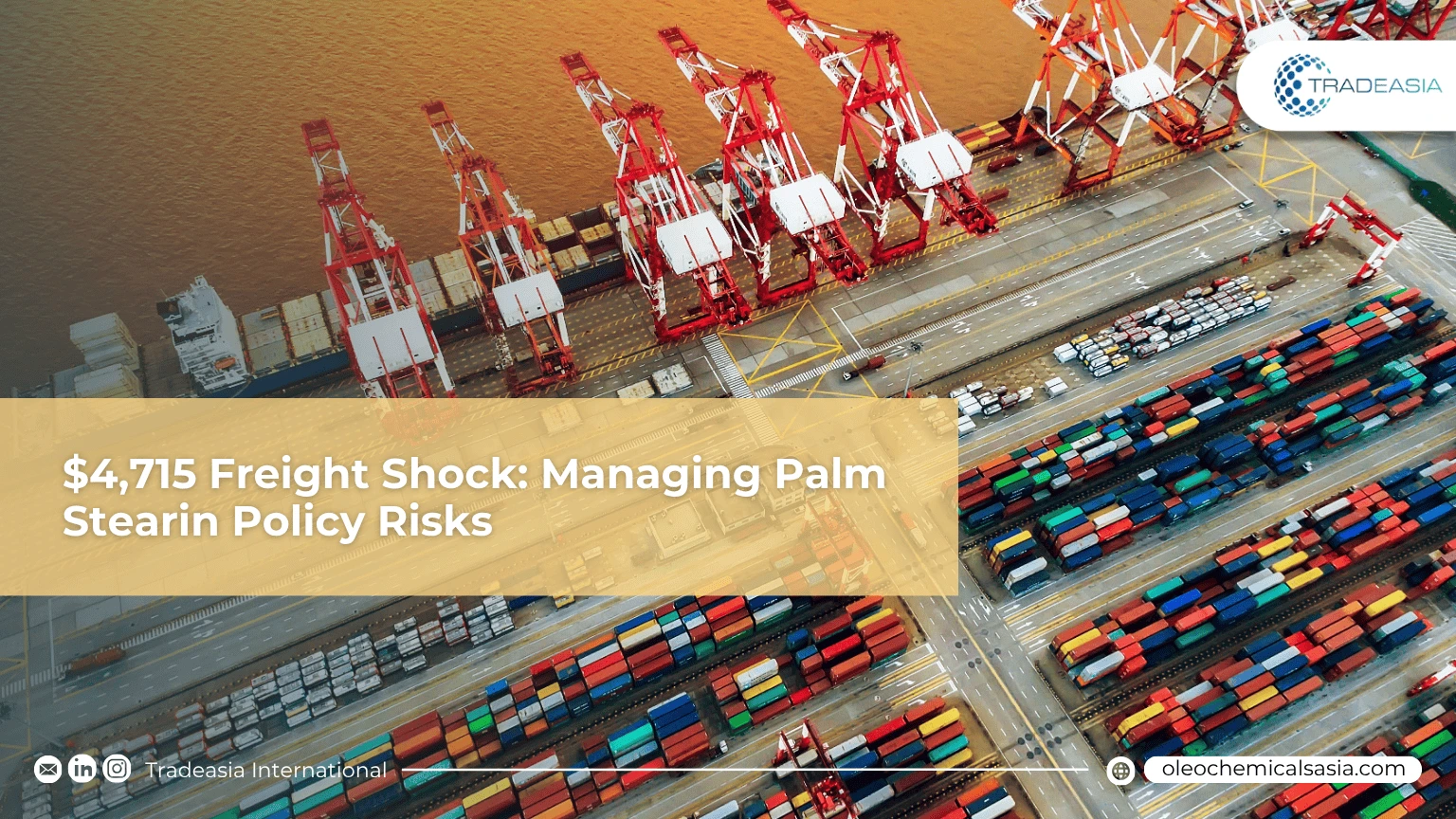The Unseen Cost of Palm Wax Procurement
For palm wax procurement teams, the biggest challenge in October 2025 is not securing the physical commodity, but controlling the cost of its journey. While global production of Palm Stearin remains healthy, the cost of securing delivery has escalated sharply, directly inflating the final landed cost for manufacturers. In an increasingly complex global trade environment, mitigating logistics risk is paramount, a task that requires sophisticated global shipping and distribution expertise. Tradeasia International provides this crucial buffer, offering streamlined supply chain solutions for palm and oleochemicals, ensuring that production schedules are protected from the sudden, often chaotic, fluctuations in the global freight market.
This need for reliable logistics is underscored by current figures. The average spot freight rate for a 40-foot container from major South East Asian ports (e.g., Port Klang, Tanjung Priok) to Northern Europe has surged by an estimated 15.0% in October, reaching approximately $4,715. Furthermore, port congestion and delayed vessel movements have extended the average delivery time for Stearin by an alarming 5 days, pushing the total average lead time to 40 days. This extended timeline is a direct hit to working capital, requiring buyers to tie up approximately 12% more cash in safety stock. As a core value within the palm oleochemical trade states, "Certainty of delivery is as valuable as the quality of the cargo itself, safeguarding entire production lines from external volatility." Despite these obstacles, the total export volume for October 2025 remains high at 350,000 Metric Tons, a 4.5% increase from Q3, demonstrating the robust production effort to meet global demand.
Hedging Against Policy-Driven Supply Shocks
Beyond the visible costs of freight, the market faces a significant structural policy risk that could immediately destabilize supply. Indonesia, a powerhouse in CPO production, is actively deliberating new CPO export restrictions to support its ambitious B50 biodiesel mandate. Any implementation of this policy would divert a substantial portion of CPO and its derivatives, including Stearin, from the export market, causing a sharp, immediate price and supply shock globally. A regional market assessment has warned that the October freight surge, combined with the continuous threat of Indonesia’s B50 policy, has collectively increased the total supply chain risk score for palm stearin procurement by 22% quarter-on-quarter. To counter this, palm wax manufacturers must move away from short-term spot market buying, instead prioritizing long-term, fixed-volume contracts with distributors who can guarantee reliable freight capacity and provide early policy risk analysis.
Sources:
-
Palm-Based Oleochemicals on the Rise: $27.7B Market by 2025 and Sustainability at Stake - Oleochemicals Asia
-
Indonesia considers new palm oil export restrictions amid biodiesel push - UkrAgroConsult
-
U.S. Government Shutdown: How Will It Impact The Global Supply Chain? - Forbes

Leave a Comment